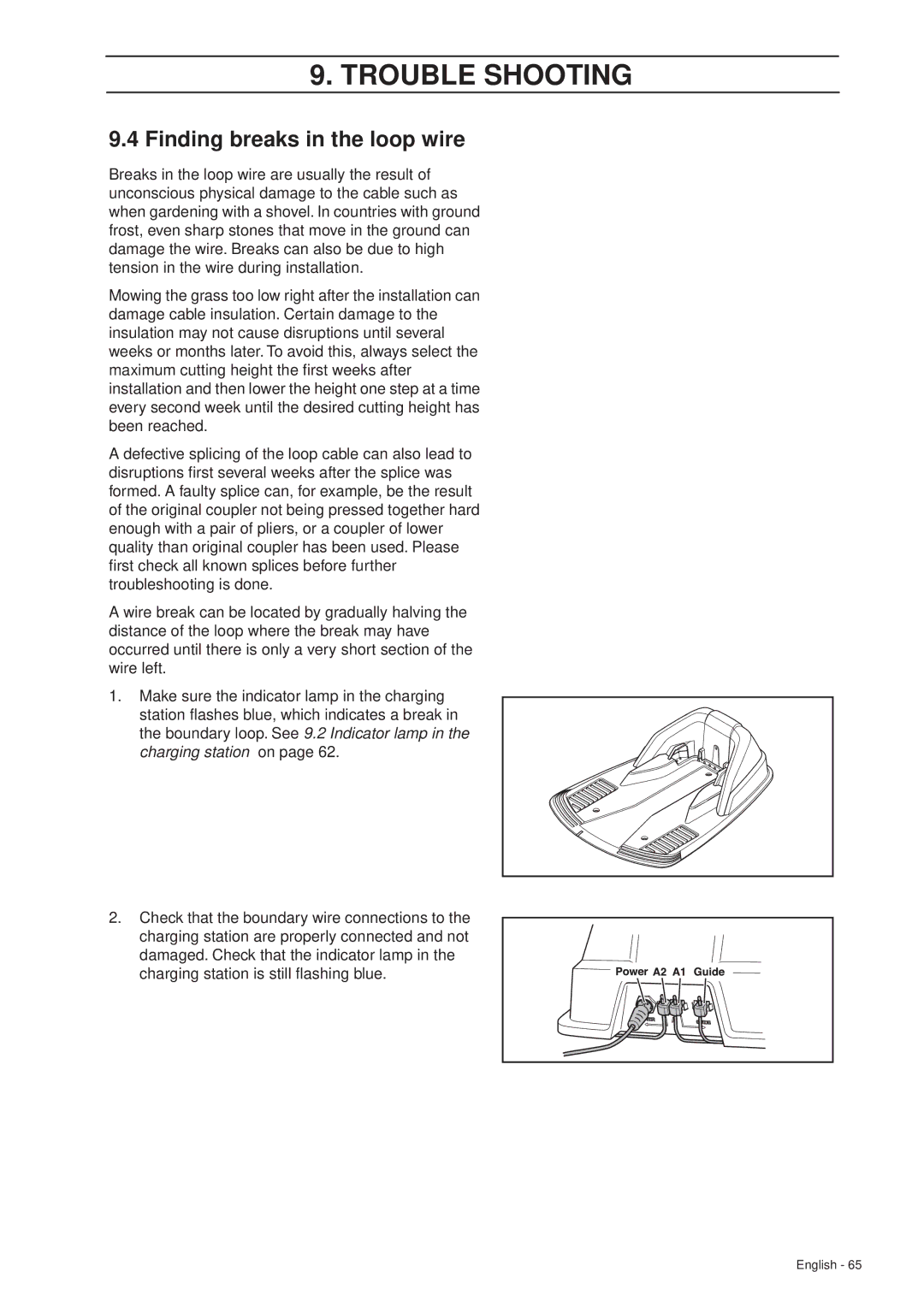
9.TROUBLE SHOOTING
9.4Finding breaks in the loop wire
Breaks in the loop wire are usually the result of unconscious physical damage to the cable such as when gardening with a shovel. In countries with ground frost, even sharp stones that move in the ground can damage the wire. Breaks can also be due to high tension in the wire during installation.
Mowing the grass too low right after the installation can damage cable insulation. Certain damage to the insulation may not cause disruptions until several weeks or months later. To avoid this, always select the maximum cutting height the first weeks after installation and then lower the height one step at a time every second week until the desired cutting height has been reached.
A defective splicing of the loop cable can also lead to disruptions first several weeks after the splice was formed. A faulty splice can, for example, be the result of the original coupler not being pressed together hard enough with a pair of pliers, or a coupler of lower quality than original coupler has been used. Please first check all known splices before further troubleshooting is done.
A wire break can be located by gradually halving the distance of the loop where the break may have occurred until there is only a very short section of the wire left.
1.Make sure the indicator lamp in the charging
station flashes blue, which indicates a break in the boundary loop. See 9.2 Indicator lamp in the charging station on page 62.
2.Check that the boundary wire connections to the charging station are properly connected and not damaged. Check that the indicator lamp in the
charging station is still flashing blue.
English - 65
